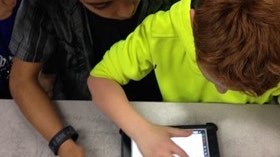Homepage
•
Learning Library
•
Blog
•
What does Common Core look like in the classroom?
Expand breadcrumbs
Expand breadcrumbs
- Learning Library
- Blog
- What does Common Core look like in the classroom?
- Homepage
- •
- Learning Library
- •
- Blog
- •
- What does Common Core look like in the classroom?
What does Common Core look like in the classroom?
By Nicole Krueger
April 19, 2014








